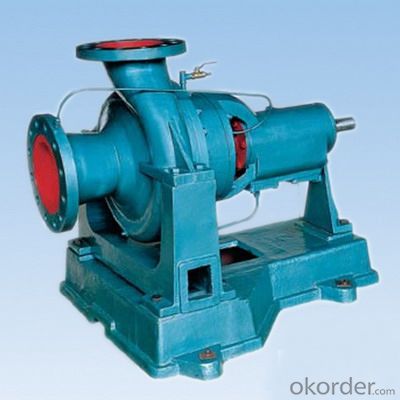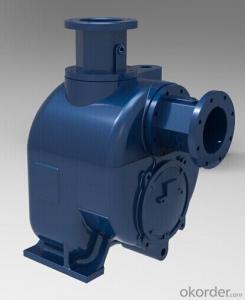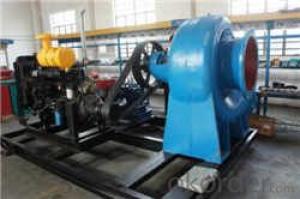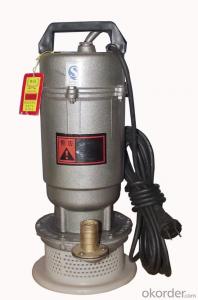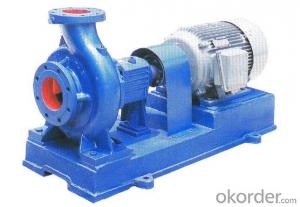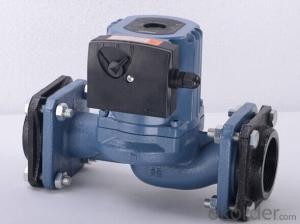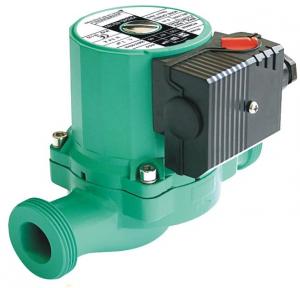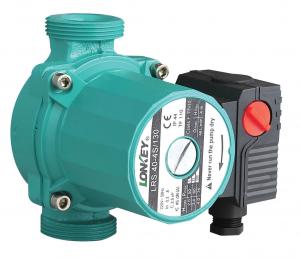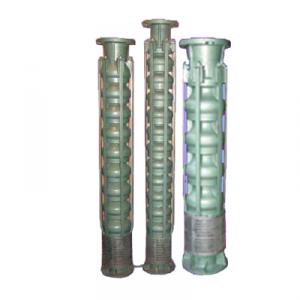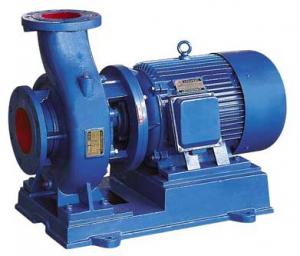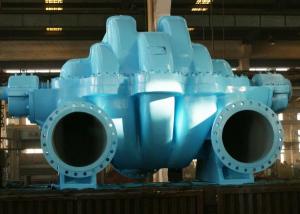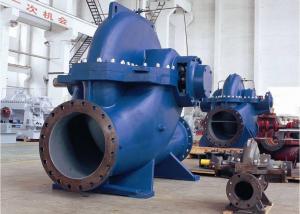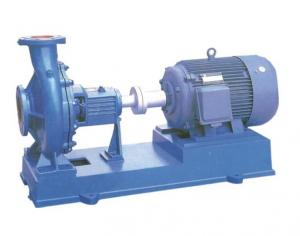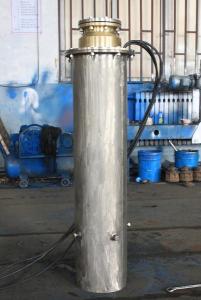Hot Water Circulating Pump XR Series
- Loading Port:
- China Main Port
- Payment Terms:
- TT OR LC
- Min Order Qty:
- -
- Supply Capability:
- -
OKorder Service Pledge
OKorder Financial Service
You Might Also Like
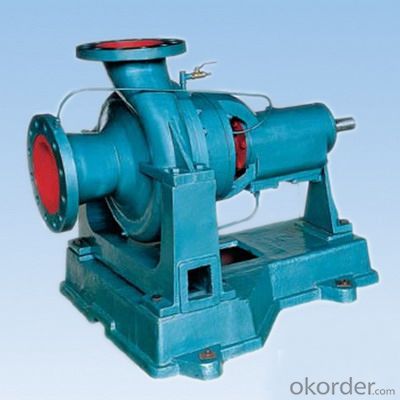
General
Type XR hot water circulating pump, according to API610 and VDAM24297(light/medium duty), it is advanced products developed from type R hot water circulating pumps with high serialization, standardization and generalization. The pumps have advanced performance, stable operation, safe and reliable. It is used in metallurgy, power stations, chemical industry as well as heating system or closed circle system for handling hot water circulating and exchange-heating. The highest temperature of the liquid can not be over 250℃. Working pressure is not allowed more than 5.O MPa.
Performance range
Capacity Q :1.6~2600m3/s
Head : 5~300m
Working Pressure(P): ≤ 5MPa
Working temperature(T): hot water ≤250℃
The description of pump type
For example:XR200-400A
XR-New Type hot water circulating pump
200-Inlet Diameter of pump(mm)
400-Impeller nominal diameter(mm)
A-Outer diameter of impeller is changed
Construction
Type XR hot water circulating pump is the kind of single-stage, single-suction overhanging centrifugal pump with horizontal axial suction and radial upward discharge.
The pump casing is radial split which installed horizontally with supported on the center line. Especially suitable for high temperature and high pressure and transport inflammable and explosive liquids.
The shaft seal is mechanical seal or packing seal. The pump used rolling bearings which get lubricated with dilute oil.
The direction of rotation
The rotation of the pump rotor is clockwise looking from the motor to the pump.
- Q: QDX is a submersible pump. What does "X" mean?
- Q submersible pumpsD single-phase motorX downdraft
- Q: I was wondering if water pumps make any noise when they are submersed? Also, my pond is quite small and I don't want to scare my fish with a noisy pump. Thank you!
- majority of the pond pumps you get to day are extreamly quiet and wont bother the fish or you at all
- Q: I have an 8 gpm pump at a depth of 170 ft, I am pumping the water 2000 ft in a 1 1/4 inch line. I need to know how many gallons per minute I am getting.
- You have already stated the volume as 8 gpm. There is an elevation head of 170 ft, a friction loss of 1 1/2 ft/100 ft at 8 gpm for and additional 30 ft. of head, You did not state what the service pressure was supposed to be at the delivery point. so the total head required of the pump will be 200 ft. or more if a pressure is desired. Add 2 1/3 ft of head for each psig of desired pressure. Because of hydrodynamic design limitations of the pump impellers, you will never find a centrifugal water pump for sale with that low volume combined with that high head. You will need a positive displacement water pump having an approximately 8 -10 gpm capacity at 200 ft head (87 psi) or more, depending on that pressure. You cannot lift water farther up than about 25 feet with any kind of pump because of the thermodynamic properties of water under negative suction pressure. Deep well pumps are lowered down into the well and submerged. The well may have been drilled 170 feet deep, but the water will probably have risen up into the casing. The actual depth of water may be much less than 170 ft. That will need to be measured You will need 3/4 horsepower as is and 1 hp with 20 psig of pressure at the delivery point.
- Q: What does water pump mean?
- According to use: - water pump, pump, slurry pump, sewage pump, sewage pump, well pump, submersible pump, pump, pump, fire pump and other household. It's a device for pumping liquid.
- Q: How important is a torque wrench,if so what is the proper fp torque for pump/pulley ?
- dont need to tighten until good and snug torque is critical on head bolts and bearing cap and rod cap bolts etc
- Q: a water pump develop for africa
- previously ApproTEC. KVM-Thika, a local manufacturing firm in Kenya. Micro-Irrigation Technologies. Rural Kenyans can no longer rely purely on subsistence farming. ... However, this pump can only pull water from a well ... wanted to pump water up to their fields on the sides of hills. So in October 1998 KickStart introduced the ...
- Q: I have a '97 Grand Prix with a 3800 V-6. There is a single bolt on the left side of the water pump that is directly behind the power steering pump pulley. How do you get the PS pump pulley off? I pulled a tricep trying to get this thing loose, and I'm no further now than when I started on it. Can anybody give me a tip on removing the pulley or the whole PS pump? I have a brand new water pump that I can't get on because of this fine piece of design by the brilliant engineers at GM!
- you dont have to pull the power steeing pulley off...There three holes in the power steering pulley that allow access to two or possible three bolt that hold the pump to the bracket... Remove the belt, then get a deep either 13 mm or 10 mm socket and place it in one of the holes in the pulley...you will find that when you remove the bolts, the pump will slide out of the way.... Do not remove any powersteeing lines or any other item from the power steering pump..You will only be causing yourself more work..... The brillant engineers at GM left you an out...All you have to do is look...ha ha
- Q: OK so i am new to RVing....I have an older 1971 trailer pull forester....It has a your normal fresh water inlet on the outside of the trailer, fresh water tank, and water pump. My question is actual a double part question #1 When i screw the hose on the inlet and start filling the water tank i hear it going in but i still have no water coming out the faucet...Does this have to do with the water pump? why am not getting water to anything except i hear the tank filling up?!?#2 Is the Water pump A/C or D/C......I have that little pull knob (that i guess turns it on or off) and i was curious if i needed to be hooked up to the Battery in front to make this work? or should it work with the regular AC that everything else is working on?Thanks for any help
- Rv Water Pump Switch
- Q: I would like a website that has pictures but any info would be helpful...
- Even if you put the auxiliary water pump on its still going to leak. The water will still circulate through it. All you need to do is buy a gasket and some silicone, spend a total of $50 and fix it.
- Q: Hi. This car is 66 chevy but the motor is a 1984 chevy 350 4bolt main stroked to 383. I think its an '84, might be an '85. I need to replace fan clutch and water pump.... the fan clutch is bad but manufacturer of the replacement parts says you must do water pump and fan clutch together. Is the pump a 66 chevy pump or a 350 small block pump? What about the fan clutch? Ok, and please help with motor mounts. do I use mounts specific for 66 model or specific to the motor?
- ?? I've never heard of a water pump that had to be replaced because you were changing the fan cluth?? Often they advise you to put in a new clutch when you change the pump, but you do not HAVE to. Anyway, a pump for a 84 85 350 will be the same -- doesn't matter if it is stroked or bored or however hotrodded.
Send your message to us
Hot Water Circulating Pump XR Series
- Loading Port:
- China Main Port
- Payment Terms:
- TT OR LC
- Min Order Qty:
- -
- Supply Capability:
- -
OKorder Service Pledge
OKorder Financial Service
Similar products
Hot products
Hot Searches
Related keywords

